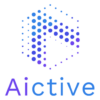Myths and Truths About Digital Physiotherapy: What You Need to Know
Digital physiotherapy is here to stay, but there’s still a lot of noise and misinformation out there. That it doesn’t work, that it’s cold and impersonal, that it’s just another fitness app with generic stretches. Spoiler: it’s not.
Let’s break down the most common myths and give you the facts—how it really works, who it’s for, and why more people (and clinics) are turning to it every day.
Myth 1: “Digital physio isn’t as effective as in-person treatment”
Truth: Multiple studies show that digital physiotherapy can be just as effective—sometimes even more—than traditional face-to-face sessions. Why? Because people stick with it. Adherence goes up when you can do your exercises at home, with reminders, real-time feedback, and no commuting hassle.
Plus, many platforms use motion sensors and AI to personalize your treatment and adjust it as you go. It’s not just effective—it’s smart.
Myth 2: “It’s only for young, tech-savvy people”
Truth: The best digital physio platforms are designed to be user-friendly, even for older adults or people who aren’t comfortable with tech. Think big buttons, voice guidance, and real human support when needed.
And here’s the kicker: older adults often benefit the most. No need to travel, easier to build a routine at home, and they get consistent support and monitoring.
Myth 3: “It’s just an app with exercise videos”
Truth: Nope. Real digital physiotherapy platforms offer full clinical treatment. That includes:
- Initial assessment
- Personalized plans
- One-on-one support from licensed professionals
- Motion sensors and data tracking
- Continuous progress monitoring
This isn’t YouTube. This is healthcare.
Myth 4: “You lose the human connection”
Truth: The hybrid model keeps the human element alive and well. You still get access to real professionals. You have check-ins, adjustments, and personalized advice. The difference is: it’s more flexible and accessible.
Some people even prefer it—no awkward clinic visits, no waiting rooms, and more privacy.
Myth 5: “It only works for mild injuries”
Truth: Digital physio covers a wide range of musculoskeletal conditions—from chronic pain to post-op recovery. In fact, many patients avoid surgery altogether because they stick to their rehab plans better when they can do them digitally.
This isn’t just for a sore shoulder—it’s for serious, long-term health improvement.
So… who is it really for?
Digital physiotherapy is perfect for:
- People with mobility challenges or who live far from clinics
- Busy parents, professionals, or students with tight schedules
- Patients who need constant follow-up and encouragement
- Companies looking to support employee health at scale
What’s in it for healthcare professionals?
A lot. Fewer no-shows. Better data. Smarter patient monitoring. And the chance to reach more people without burning out.
Digital tools don’t replace physios—they make them more powerful.
Final Thoughts: Less Myths, More Movement
This isn’t about replacing people with machines. It’s about giving more people access to care that works, motivates, and evolves with them.
So next time someone says “digital physiotherapy doesn’t work,” show them this.
Want to know more about what Aictive can do for your company?
Schedule a Demo
Or better yet: tell them to try it.
